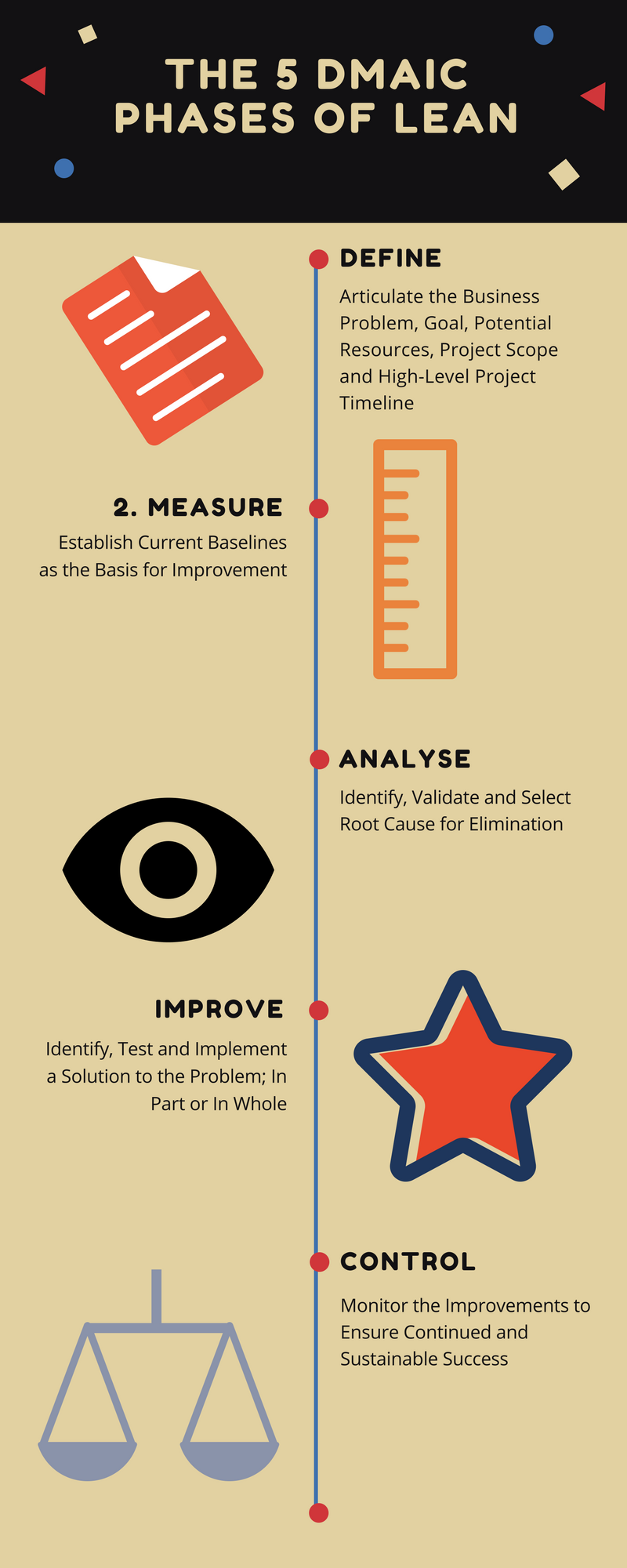Lean Six Sigma is an amalgamation of Lean and Six Sigma. Lean is made of concepts that help reduce the seven kinds of waste. Six Sigma, on the other hand, reduces processes variations thereby linking the processes together tightly.
Lean Six Sigma contains various levels of certifications each providing the delegate with a higher understanding of Lean Six Sigma. These certifications can be listed as follows:
The course can be started in two ways:
- Complete the Yellow Belt certification and then go for the Green Belt Certification
- Start the Green Belt certification directly and cover Yellow Belt and Green Belt concepts together in a single course
The Green Belt methodology follows the DMAIC phases to improve upon the current processes. It includes the following:
- Define phase
- Measure phase
- Analyse phase
- Improve phase
- Control phase

A delegate undergoing a Green Belt Certification needs to take up at least one Six Sigma project. Also, the delegate needs to act as a mentor to another Green Belt or at least a Yellow Belt certified professional.

 ENQUIRE
ENQUIRE
 REQUEST CALLBACK
REQUEST CALLBACK
 GET A FREE QUOTE
GET A FREE QUOTE


 Introduction
Introduction Course Details
Course Details Course Content
Course Content






 London
London